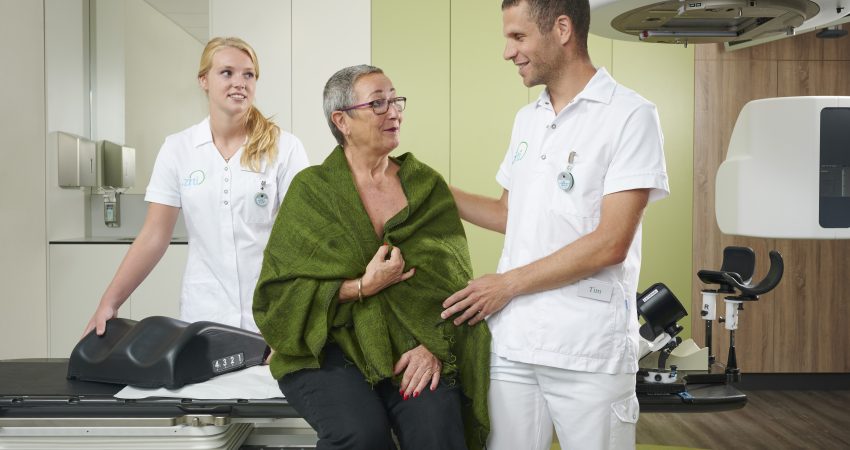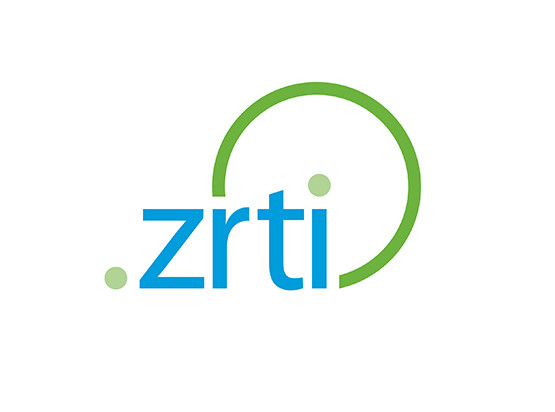
The Zuidwest Radiotherapeutisch Instituut (ZRTI) treats more than 2,200 cancer patients annually by means of radiotherapy. Roughly 100 employees work at the Roosendaal and Vlissingen locations. The ZRTI works together with specialists from general and academic hospitals. They mainly focus on patients from Zeeland, West Brabant and parts of South Holland.
We recently spoke with Anne Alblas, Medical Imaging and Radiation Expert | Application Manager at the ZRTI. Together with colleague Arjen Tange, information coordinator, she is also responsible for the application management of SpeechReport. In this case study, she shares her experience with us.
Since 2014, ZRTI radiotherapists have been using G2 Speech’s speech and workflow solutions to create reports using speech recognition. MediSpeech was the original system used prior to the creation of G2’s latest solution offering, SpeechReport. Over time, as technology and speech recognition has advanced, MediSpeech has become outdated.
After an enthusiastic demonstration of SpeechReport, it was decided to commission the migration to the new solution. The new SpeechReport 3.1.2 platform was rolled out in 2021. A project plan was drawn up with clear milestones and deadlines. During the implementation and design of the system, there was intensive cooperation with the G2 Speech project team and the guidance was very pleasant. We, as application managers, received intensive training, after which we were able to transfer the knowledge to the end users ourselves.
Clear objectives were formulated prior to the project. For example, the speech recognition had to be interactive. Because the radiotherapists can now see the dictated text directly on the screen, any corrections can be made by themselves, after which the report can be sent directly to the last step in the workflow. Since the radiotherapists were used to dictating without the speech recognition being directly visible on the screen, it was also decided to use the option to have the secretary check the recognised text. So that the addition option is there.
About 13 Radiotherapists and two ‘physician assistants’ now use SpeechReport to create reports. SpeechReport is linked to P2C. A report is automatically started by means of a dictation button in P2C. A very nice, time-saving functionality is the option to insert auto texts. These predefined texts can consist of fixed text and/or free text fields that can easily be filled with speech. Separate auto texts can be formulated for each radiotherapist and patient category.
When a patient has been to the radiotherapist for a consultation, a first report is started. There are many different treatment trajectories with matching treatment times, but on average a patient is in our care for about 4 weeks from consultation to the last radiation. The first report is sent within a week to co-practitioners and referrer. This turnaround time is influenced by how quickly a definitive decision can be made which treatment schedule and radiation load is the best treatment approach for an individual patient.
If, compared to the estimated normal side effects, special details arise during the treatment of a patient, a radiation oncologist dictates an extra report in a low-threshold manner. This is very easy and starts in three mouse clicks. At the end of the treatment, the radiation oncologist can dictate a final report if necessary, but this is not included in the standard protocols. At a follow-up appointment of a patient, for example a year after completion of the treatment, a report is always dictated and sent. The average turnaround time for this report is two days faster with SpeechReport than with MediSpeech.
Managing the SpeechReport application takes minimal time. Of course it was quite intensive in the beginning, despite extensive training there are always questions. In the beginning, my colleague and I kept the dictionary management up to date from application management, but we have now appointed ‘key users’ for this. They check the list of unknown words for the correct spelling and add it where necessary. We arrange the creation of new users or the configuration of new auto texts ourselves in the SpeechReport Administration Module, which is also very intuitive and user-friendly.
It is also valuable that we receive regular feedback reports with statistics about the speech recognition from G2 Speech. With these insights we can give individual users concrete tips. This can concern the use of the SpeechMike, but also the way words are corrected in the report. In this way, the speech recognition continues to learn.
In terms of objectives and expectations, the migration to SpeechReport has been a success for us. The integration with the EHR is better, the interface is fresh and modern and we can easily personalise settings. Such a multi-party migration is intensive, but G2 Speech used precise and realistic planning. The foundation has been laid and the radiotherapists have started interactive dictation. Our next mission is to deepen the understanding of the various functionalities within SpeechReport and to expand the number of auto texts, because that is where profit can be made. These gains allow us to spend more time with our patients, which in turn aligns with the ZRTI’s vision of surrounding the patient with attention and providing the best possible treatment.


